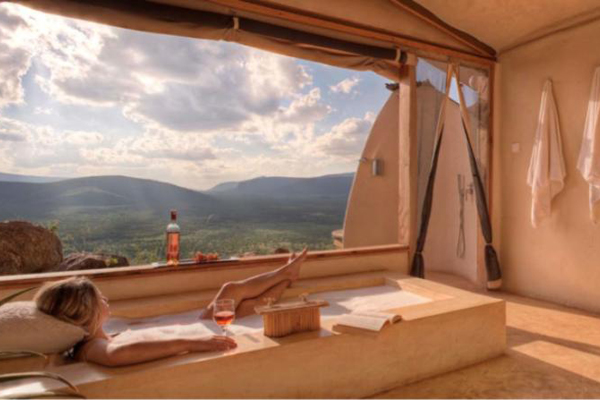5 reasons to visit Samburu National Reserve
Located north of Laikipia, Samburu National Reserve is made up of scrubby, open bush land and savanna, with the fringing riverine forest of acacias and large doum palms extending along the edge of the Ewaso Ngiro. Aside from the plentiful wildlife that can be seen in the reserve, there are many attractions to Samburu National Reserve…
1.
You can see the Samburu 5. Whilst the bigger, and more expected animals (the likes of elephants, giraffe, the big cats etc.) can be seen daily inside the reserve, guests have the remarkable opportunity to see the Samburu Five - five rare and endemic animals to the Samburu ecosystem. These include the reticulated giraffe, the Somali ostrich, the gerenuk, the Beisa oryx and the Grevy’s zebra.

2.
You can visit the Samburu Tribe who, like the Masai, are nomadic pastoralists, moving from one place to another following patterns of rainfall in search of fresh pasture and water for their livestock. The Samburu Tribe are easily identified as they wear bright and colourful attire and the women adorn themselves in beaded necklaces and jewelry.

3.
The park’s landscape is very photogenic. The river Ewaso Ngiro is the heart of the park and contrasts against the dry and arid desert-like soil that shines bright red under the African sun.

4.
There are some truly beautiful camps in Samburu. Inside the national reserve, Elephant Bedroom Camp is the perfect choice for those looking for an authentic tented camp in the heart of the game (named so because herds of elephants like to come and browse around the unfenced camp). Outside the park, Sasaab and Saruni Samburu offer ultimate luxury in unique and untouched landscapes.

5.
If you stay outside the national reserve, such as Saruni Samburu in the Kalama Conservancy, you can partake in a diversity of activities that are available exclusive to conservancies. These include night game drives, guided bush walks, trekking excursions, visiting the local Samburu caves full of historical rock art, cultural village visits and warriors academy.

Further reading...
